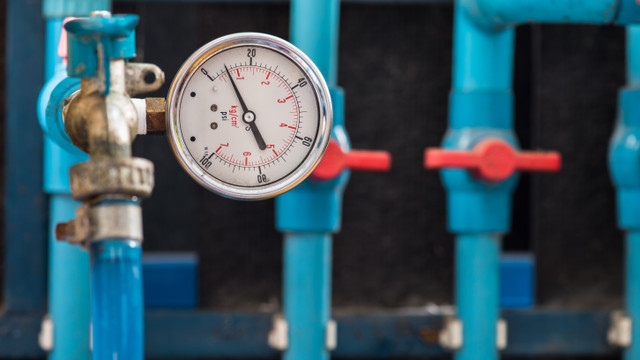
Check valves, also known as one-way valves, play a crucial role in maintaining the flow direction within piping systems. By permitting fluid to flow in only one direction and preventing backflow, they help to maintain system integrity and efficiency. While check valves are commonly used to prevent contamination and back-siphoning, they also influence water pressure in various ways. In this post, we’ll explore how check valves work, the different types available, and the ways they affect water pressure in a piping system.
Check valves operate autonomously, meaning they do not require external power or manual operation. When fluid flows through the system, the check valve’s internal disc or ball is pushed open by the forward pressure. If flow reverses, gravity or a spring mechanism quickly closes the valve, stopping any backward movement. This mechanism makes check valves invaluable in water systems, where backflow could lead to contamination, equipment damage, or inefficiency.
Different types of check valves have varying effects on water pressure. The design and materials of the valve influence factors such as flow rate, cracking pressure (the minimum pressure needed to open the valve), and the overall pressure drop across the valve. Here are some common types and their impacts:
Swing Check Valves : These valves have a hinged disc that swings open when water flows in the correct direction. They are widely used in water systems due to their low pressure drop and durability. However, because they rely on gravity or a spring to close, there can be a slight delay in their operation. This can lead to a minimal fluctuation in pressure during flow changes.
Ball Check Valves : With a spherical ball that moves within the valve body, these valves are excellent for high-pressure applications. Ball check valves create a low pressure drop in the system due to their simple design, which minimizes resistance to flow. However, in high-pressure systems, the weight of the ball can slightly influence the pressure needed to maintain continuous flow.
Diaphragm Check Valves : These feature a flexible diaphragm that moves up and down to allow or block flow. Diaphragm check valves are effective in applications that require consistent pressure control, as they provide a tight seal. However, they may introduce a higher pressure drop compared to other types due to the resistance created by the diaphragm.
Spring-Loaded Check Valves : Equipped with an internal spring that holds the valve closed until a specific pressure (cracking pressure) is reached, these valves are ideal for applications needing precise pressure control. The spring mechanism can add resistance to the system, resulting in a slightly higher pressure drop. However, they allow for more accurate control of pressure changes.
In any piping system, the addition of a check valve introduces some level of resistance. This resistance leads to a phenomenon known as pressure drop—the reduction in pressure that occurs as fluid flows through the valve. The extent of this pressure drop depends on various factors, including the type of check valve, the flow rate, and the system pressure.
Pressure Drop and Flow Rate : When water flows through a check valve, it encounters some resistance, which slightly reduces the system’s pressure. In general, higher flow rates result in a more significant pressure drop. For example, a swing check valve might introduce only a minimal pressure drop at low flow rates but could result in a more noticeable drop at higher flows.
Cracking Pressure Requirements : Cracking pressure is the minimum pressure required to open the valve. In systems with low water pressure, a valve with a high cracking pressure could impede flow or even prevent the valve from opening fully. Choosing a check valve with an appropriate cracking pressure for your application is essential to avoid unintended pressure losses.
Water Hammer and Pressure Spikes : When a check valve closes rapidly, it can cause a pressure surge known as water hammer. This is a sudden spike in pressure resulting from the force of flowing water being abruptly stopped. Water hammer not only affects water pressure but can also damage pipes, joints, and other system components. Selecting a check valve with anti-water hammer features, such as a spring-loaded design, can help mitigate this effect.
The key to optimizing water pressure in a piping system with check valves is selecting the correct valve type for the application. Here are some guidelines to help:
Assess Flow Rate and Pressure Requirements : If you have high flow rates, consider valves that minimize pressure drop, such as swing or ball check valves.
Consider Cracking Pressure : Ensure the valve’s cracking pressure is compatible with the system’s operating pressure to prevent flow restrictions.
Look for Anti-Water Hammer Features : If pressure spikes are a concern, a spring-loaded check valve can help dampen the effects of sudden closure, reducing water hammer.
Conclusion
Check valves significantly impact water pressure in piping systems by introducing a degree of resistance and managing flow direction. Understanding the type of check valve that best fits your system requirements, as well as how it affects water pressure, can ensure efficient system operation and protect against pressure-related issues. Proper selection and installation of check valves can help maintain a balanced pressure, improve system reliability, and reduce the risk of damage from water hammer.
